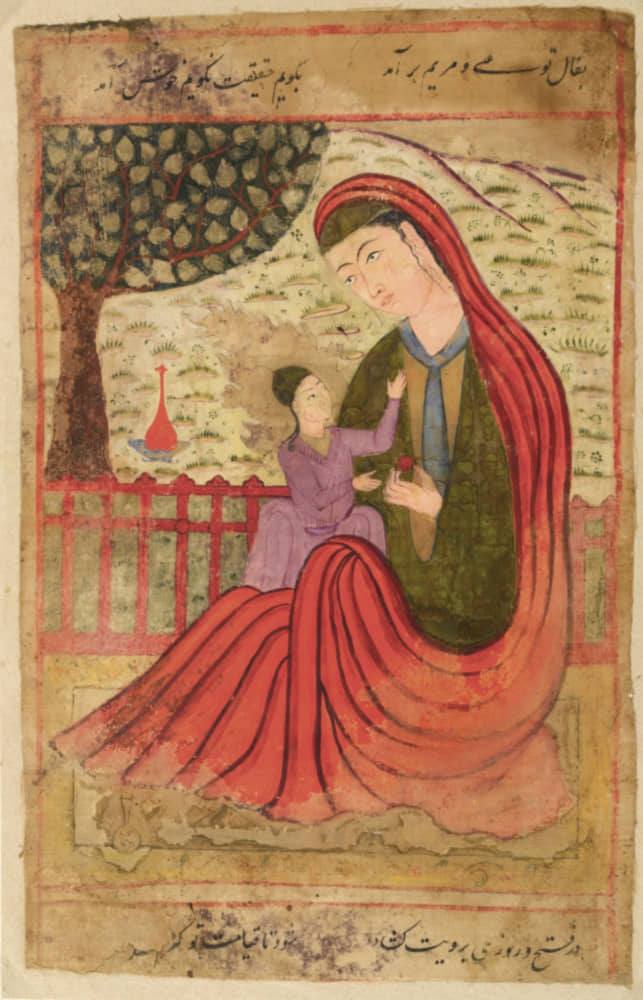The Koran speaks of Moses (Moussa), and the Bible specifies his role in history. When Israel escaped from Pharaoh and left Egypt, God revealed Himself as the One who sees misery and who descends to deliver from the oppressor (Exodus 3, 7-8). He also summons to leave the idols produced by man and to leave occult systems that end up hiding the true God and enslaving people.
On Mount Sinai, Israel said, “Yes” (Exodus 19), and the people progressively came out of injustices, but also from magic (Exodus 22, 17-26). They stopped the sacrifices of infants and the prostitution linked to the magical rites of the Baals that the prophet Baruch qualified as a demonic cult (Baruch 4, 7). This new life was progressively organized in a kingdom, notably with King David (Daoud).
The Koran cites several biblical prophets, such as Nahum, Malachy, Jeremiah, Isaiah. Their era knew grave tribulations. The kingdom of Samaria fell in the hands of the Assyrians in the year 721 BC. There were to be no more victories to comfort believers; only interior signs henceforth were to guide man in his discernment of good and evil.
Jerusalem was burned in the year 598 BC. And God seemed to be silent. The prophets prayed. Were the people or their ancestors obliged to expiate a sin? This was the time to become more humble, infinitely more humble.
Maybe also the people had to live in exile to discover that God was greater than what they had understood up to now. Cyrus, the Persian, believed in one single and unique divinity, Ahura-Mazda, permitting him to peacefully centralize his empire and to unite philosophers and beliefs. But this was an abstract, impersonal divinity. The prophet Isaiah wasn’t impressed; rather, he acknowledged the idea of a unique God. But this God is the personal God revealed on Mount Sinai (Isaiah 44, 6).
One day the exiles came back to the land. The Temple was rebuilt. Some thought humbly that no one could pretend to understand the celestial light, not even the Sanhedrin, for sin too much clouded their hearts. There had to be a Temple for God not made by human hands, a celestial Temple, a new pardon, and then there would be light. “O that thou wouldst rend the heavens and come down, that the mountains might quake at thy presence” (Isaiah 64, 1).
The prophet Daniel announces the coming of Al-Massih, a Messiah “Holy of Holies,” who resides where God resides. He is also “Prince-Messiah;” hence king, but a “massacred Messiah” (Dn 9, 24-26). His prophecy counts seventy weeks which are read according to the numerical customs of the ancient Orient. Thus, very probably, the weeks are counted as years (Dn 9, 24-25), then counted as months (Dn 9, 26), then as days (Dn 9, 27), with a sum of 70 years; that is to say, for a period that covers the life of Maryam and her son Al-Massih.
The sage reflects on the error of the impious who say: “For if the righteous man is God’s son, he will help him and will deliver him from the hand of his adversaries. Let us test him with insult and torture, that we may find out how gentle he is, and make trial of his forbearance. Let us condemn him to a shameful death, for, according to what he says, he will be protected” (Wisdom 2, 18-20).
And the sage observes: “Thus they reasoned, but they were led astray, for their wickedness blinded them, and they did not know the secret purposes of God, or hope for the wages of holiness, nor discern the prize for blameless souls /…/ but through the devil’s envy death entered the world, and those who belong to his party experience it” (Wisdom 2, 21-24).
Francoise Breynaert is a secular oblate of the Fraternity of Our Lady of the Desert (Belgium). A doctor of theology, she has published foundational works (biblical, Christological) and also Marian and spiritual works. She has also done theological research on the salvation of non-Christians and the Good News for the deceased, and on the Coming of Christ, which the West often confounds, unhappily, with the end of the world, and finally on the exegesis of orality in connection with the Christians of the East. Her works are recognized (imprimatur, episcopal prefaces) in France and abroad. Her research has interested Islamologists who, in turn, have made her part of their studies.
The featured image shows the Virgin and Child, Mughal, circa 1580.
